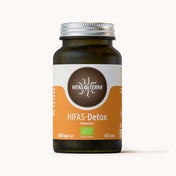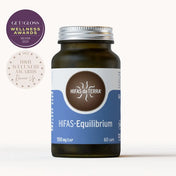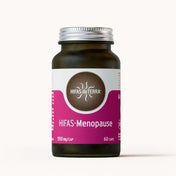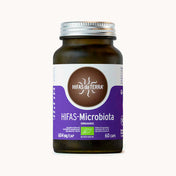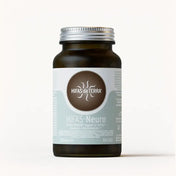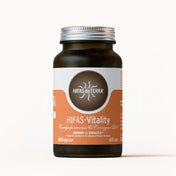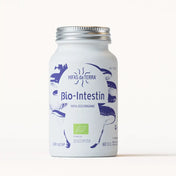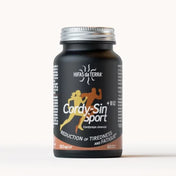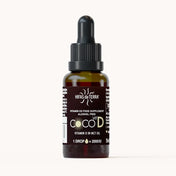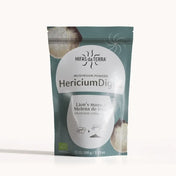What is vitamin D and what is it for?
The Vitamin d It is an essential substance for our health. Among its main functions is the maintenance of the health of The bones and immune system.
According to the Spanish Family and Community Medicine Society, this vitamin is directly related to some strong bones, increases calcium absorption at the intestinal level, but also acts at the muscular, nervous and immune level.
In spite of this, it is still a matter of concern since much of the population present vitamin D. deficit
Posted on 7/06/2022.
Updated by communication
Hifas da Terra 02/02/2023
Content index
Some of these ideas may already go around your head, but surely you did not know that Medicinal fungi are one of the best natural sources of vitamin D that exist. We tell you why.
Types of vitamin D
First of all, it should be differentiated two ways fundamental that require the action of the liver and kidneys to be biologically active.
Ergocalciferol (D2)
Its origin is fundamentally vegetable. It joins the diet with the consumption of plant foods that contain it, such as medicinal mushrooms and, more specifically, food supplements made from these either dust and extract. The supplement for the immune system Bio-Defense It would be a good example since it incorporates Reishi dust, Shiitake, Maitake, Ostra Seta and Card Set.
Coleciferol (D3)
Unlike the previous one, it is on the skin after the exposure to UV radiation, but it can also be obtained from the diet, fundamentally from foods of Animal origin.
Foods rich in vitamin D
According to various publications, Few foods of nature contain the vitamin of the sun. These include fatty fish such as salmon, tuna and mackerel, but also some vegetables and, attention, also fungi and mushrooms.
In this sense, D2 studies obtained from mushrooms and fungi They have demonstrated the Increase in 25OHD (circulating vitamin D) in clinical trials in healthy people But with winter deficit. After two weeks, the 25th Serum was significantly greater in the group that consumed the vitamin D of the fungi than in the placebo group.
Fountain: Cardwell, G.; Bornman, J.F.; James, A.P.; Black, L.J. A Review of Mushrooms As a Potential Source of Dietary Vitamin D. Nutrients 2018, 10, 1498.
Fruits, vegetables and medicinal fungi
According to the study cited and the previous graph, there is no doubt: the Medicinal fungi They are a good one Vitamin D. source The most prominent in this regard are Shiitake, Maitake and Pleurotus ostreatus, inter alia. Everyone has vitamins B, C and E, as well as D precursors of the D.
quality in vitamin D sources
Fungi are an exceptional source of vitamin D if they have been cultivated sustainably with non -invasive techniques, following some Ecological production and guarantee requirements and receiving solar radiation. Like us, they need UV radiation to correctly synthesize this vitamin.
The Lee Research Group (Lee G et al., 2009) studied the nutritional and therapeutic differences between the shiitake grown with and without UV radiation, showing that the shiitake grown in optimal radiation conditions had significantly higher levels of this vitamin and more calcium than the shiitake cultivated inside.
Discover Bio-Defense
The daily support for your defenses with prebiotics, zinc, vitamins C and D and Beta-Glucanos. Now with a 10% discount with the coupon Defenses23.
How to increase vitd quickly
It is estimated that between the 80% and 90% of the reserves of these vitamin in our body comes from sun exposure. In the latitudes in which we move it is estimated that the reserves of this vitamin could be guaranteed putting the face and arms in the sun between 5 and 15 minutes, preferably in central hours of the day. However, this is a general estimate because in addition to latitudes and schedules, the air pollution, the presence of clouds influence vitamin D. absorption
Symptoms of the lack of vitamin D
As we have already mentioned, the vitamin of the Sun, to be exact, must be considered a prohormone, since it becomes a metabolite that acts as a Essential steroid hormone to maintain homeostasis of the skeleton regulating calcium and phosphorus levels (Deluca et al. 1990). For this reason it is vitamin par excellence when talking about skeleton mineralization, that is, of the maintenance of a Bone health adequate Throughout our life.
Bones and immune system
The rickets and the softening of bones are consequences of the lack of VitD, but the lack of this vitamin in blood has also been related to numerous chronic diseases, including cardiovascular diseases, diabetes, autoimmune diseases, cancer and other diseases that affect the nervous system such as depression.
Numerous studies demonstrate an antiproliferative and propapoptotic capacity, including antimethasic in cancer processes such as breast or kidney cancer.
This antitumoral capacity has aroused clinical interest, but vitamin D has no therapeutic application due to its high calcium action. Direct suprafisiological dose administration induces hypercalcemia.
However, more studies are necessary to establish clear relationships on this vitamin and the development of certain pathologies.
Sun vitamin
The Vitamin D3 synthesis It occurs several hours after sun exposure. When sun exposure is continuous, vitamin levels are modulated by melanin synthesis, the main competitor of vitamin D3.
This allows our regular body for excessive production during prolonged period of sun exposure.
Indeed, the health of our body depends on a balanced sun exposure. Excessive and unprotected exposure generates breaks in the genetic material that trigger carcinogenic processes and increased pigmentation can decrease vitamin D3 up to 50 times (Clements et al. 1992).
On the contrary, total protection prevents UV radiation from reaching the dermis, completely inhibiting the main synthesis of the vitamin D. antitumor hormone
Vitamin D: Frequently asked questions
Before the arrival of SAR-COV-2 The relationship of this vitamin and exposure to viruses and bacteria was already studied but studies have multiplied following the pandemic.
Recently the anti -inflammatory appearance of vitamin D In the flu virus And some have been made Recommendations for COVID-19 patients.
However, in addition to these latest results related to the immune system, the Lack of vitamin D has been related to rickets in children and with osteomalacia (bone softening) in adults.
It occurs in the skin after exposure to sunlight and, subsequently, changes in its liver and kidney structure are caused to form the active hormone.
- Adequate levels: 25OHD concentrations in blood between 30 and 70 ng/ml.
- Insufficiency: levels below 20 ng/ml
- Deficiency: levels below 10 ng/ml
Vitamin D insufficiency favors the development of osteopenia and osteoporosis (progressive decrease in bone amount).
Prolonged vitamin D deficiency causes rickets to children in growth and osteomalacia phase in adults. The most common symptoms are pain that originates in the bones, mainly in the pelvis, the spine and the ribs.
- Salmon
- Mackerel
- Can sardines
- Tuna
- Egg
- Enriched milk
- Mushrooms and fungi
- In children under 18: 600 IU/day
- In over 18 years: 800 IU/day
- Bone pain
- Deformations in the bones (especially in thorax)
- Low levels of calcium or phosphorus in blood
- Osteoporosis and fractures
In summary...
- Despite the hours of light from our country, a Recent study It states that 75% of the population would present low levels of vitamin D, a figure that reaches 80% in young people.
- This vitamin is related to the function of the immune system, mental balance, bone health and the incidence of certain viruses.
- Maintain adequate levels of vitamin D protect us from immunity problems and help us to growth and development of bones and maintain our mental balance.
- Are you looking for a natural supplement containing vitamin D? In Hifas da Terra we develop Bio-Defense, the daily support for defenses with the bioactive substances of the most studied medicinal fungi.
If you are interested in this post you can subscribe HERE to ours Newsletter And you will receive articles like this and others of interest in your email.
- Vitamin D insufficiency is a global epidemic, which affects more than half of the population
- Vitamin D deficit
- https://ods.od.nih.gov/pdf/factsheets/VitaminD-DatosEnEspanol.pdf
- https://medlineplus.gov/spanish/vitaminddeficiency.html
- https://portal.guiasalud.es/wp-content/uploads/2021/07/pa_10_avalia-t_vitamina-d-1.pdf
- https://www.semfyc.es/grupos/nutricion-y-vitamina-d/
- Cardwell, G.; Bornman, J.F.; James, A.P.; Black, L.J. A Review of Mushrooms As a Potential Source of Dietary Vitamin D. Nutrients 2018, 10, 1498. https://doi.org/10.3390/nu10101498
- European Journal of Clinical Nutrition (2011) 65, 965-971; DOI: 10.1038/EJCN.2011.53.
